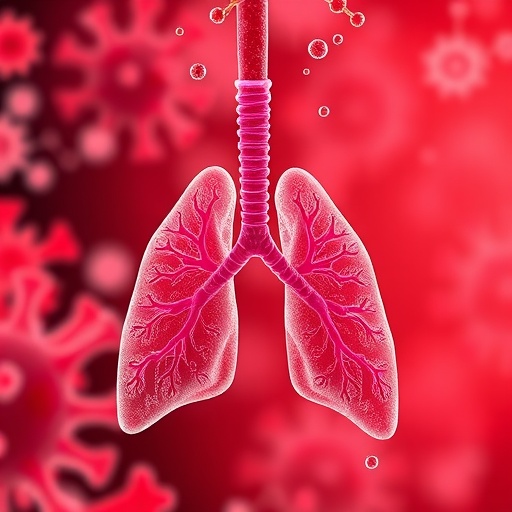Drinking for two? Prenatal alcohol exposure rewires the brain and fuels compulsive behavior, new study finds – Texas A&M Stories

Report on the Neurodevelopmental Impact of Prenatal Alcohol Exposure and Alignment with Sustainable Development Goals (SDGs)
A recent study provides critical insights into the neurological mechanisms of Fetal Alcohol Spectrum Disorders (FASD), reinforcing the urgency of public health initiatives aligned with the United Nations Sustainable Development Goals (SDGs), particularly SDG 3 (Good Health and Well-being).
Key Research Findings
Identification of a Specific Neurological Pathway
The study, published in Neuropharmacology, successfully identified a specific brain circuit damaged by prenatal and perinatal alcohol exposure. This contributes directly to understanding non-communicable diseases as outlined in SDG 3.
- Affected Brain Cells: The research pinpointed cholinergic interneurons (CINs) within the striatum, the brain’s decision-making hub, as being significantly impacted.
- Neurological Damage: High-resolution imaging revealed a sharp reduction in the number of CINs in offspring exposed to alcohol.
- Functional Impairment: The study observed a marked decrease in the firing activity of these neurons and a reduced release of acetylcholine, a chemical essential for learning and adaptive behavior.
Manifestation in Cognitive and Behavioral Deficits
The neurological damage manifests in cognitive and behavioral challenges that have lifelong implications, affecting the achievement of SDG 4 (Quality Education) and SDG 10 (Reduced Inequalities).
- Cognitive Inflexibility: Affected offspring demonstrated a significant inability to adjust thoughts and behaviors in response to new or changing environments.
- Compulsive Behavior: The research established a direct link between early alcohol exposure and an increased risk for compulsive behaviors in adulthood, including compulsive alcohol consumption.
Contribution to Sustainable Development Goal 3: Good Health and Well-being
Strengthening Prevention and Treatment of Substance Abuse (Target 3.5)
The findings provide a scientific basis for strengthening the prevention and treatment of harmful alcohol use.
- Prevention: The research underscores that there is no safe amount or time to consume alcohol during pregnancy, reinforcing public health messages aimed at preventing FASD, a leading cause of neurodevelopmental disorders.
- Treatment: By identifying the specific CINs affected, the study opens possibilities for developing targeted therapies to restore cognitive and behavioral flexibility, directly contributing to treatment goals.
Broader Implications for Sustainable Development
Advancing SDG 4: Quality Education
FASD is a significant barrier to achieving inclusive and equitable education for all. An estimated 1 in 20 school-aged children in the United States may be affected.
- The cognitive inflexibility caused by FASD directly impairs a child’s ability to learn, adapt, and succeed in educational settings.
- Addressing FASD through prevention and intervention is critical to ensuring children have access to quality early childhood development and are prepared for primary education (Target 4.2).
Supporting SDG 10: Reduced Inequalities
The lifelong challenges associated with FASD can create and exacerbate social and economic inequalities.
- Individuals with FASD may face significant disadvantages in education, employment, and social integration.
- By advancing understanding and potential treatments, this research contributes to reducing inequalities for a vulnerable population.
Conclusion and Recommendations
This research establishes a clear link between prenatal alcohol exposure, specific neural circuit damage, and subsequent cognitive and behavioral impairments. The findings highlight the critical importance of prevention and intervention strategies to mitigate the impact of FASD and advance multiple SDGs.
- Intensify Public Health Campaigns: In line with SDG 3, public health messaging must be strengthened to eliminate alcohol consumption during pregnancy.
- Promote Targeted Research: Further research should focus on developing interventions aimed at the identified cholinergic interneurons to treat FASD symptoms.
- Integrate Educational Support: To achieve SDG 4, educational systems must be equipped with resources to support children with FASD.
- Foster Multi-Sectoral Partnerships (SDG 17): A comprehensive approach requires collaboration between researchers, healthcare providers, educators, and policymakers to prevent FASD and support affected individuals.
SDGs Addressed in the Article
-
SDG 3: Good Health and Well-being
The article directly addresses SDG 3 by focusing on Fetal Alcohol Spectrum Disorders (FASD), a significant public health issue. It discusses the causes of this neurodevelopmental disorder (prenatal alcohol exposure), its lifelong health consequences (impaired brain development, cognitive inflexibility, compulsive behaviors), and the importance of prevention and treatment. The research highlighted aims to improve health outcomes for affected individuals and reinforces public health messages about the harmful use of alcohol, which is a key component of ensuring healthy lives and promoting well-being for all at all ages.
Specific SDG Targets Identified
-
Target 3.5: Strengthen the prevention and treatment of substance abuse, including narcotic drug abuse and harmful use of alcohol.
This target is central to the article. The entire discussion revolves around the consequences of the “harmful use of alcohol” during pregnancy. The article explicitly calls for prevention, stating, “The findings also reinforce longstanding public health messages about the risks of drinking alcohol during pregnancy,” and Dr. Wang emphasizes, “This is a preventable disorder… There is no safe amount, no safe time, to consume alcohol during pregnancy.” The research also points toward better treatment, mentioning that identifying the specific brain circuits “opens possibilities for targeted therapies.”
-
Target 3.4: By 2030, reduce by one third premature mortality from non-communicable diseases through prevention and treatment and promote mental health and well-being.
The article connects to this target by addressing the promotion of mental health and well-being. FASD is described as a “neurodevelopmental disorder” that leads to long-term challenges with mental health, including “problems with flexible thinking and impulse control” and an increased risk for “compulsive behaviors” and addiction. The research aims to develop “more effective treatments of FASD,” which directly contributes to promoting the mental well-being of those affected by this non-communicable condition.
Indicators for Measuring Progress
-
Prevalence of Fetal Alcohol Spectrum Disorders (FASD)
The article implies this indicator by providing a specific statistic: “Fetal Alcohol Spectrum Disorders (FASD), a leading cause of neurodevelopmental disorders, may affect as many as 1 in 20 school-aged children in the United States.” Tracking the prevalence of FASD in the population would be a direct measure of the effectiveness of prevention strategies aimed at reducing the harmful use of alcohol during pregnancy, as called for in Target 3.5.
-
Rate of compulsive alcohol use in populations with FASD
This indicator is implied by the research finding that “prenatal alcohol-exposed offspring showed compulsive drinking in adulthood.” Measuring the incidence and prevalence of substance abuse and compulsive behaviors within the FASD population would help quantify the long-term health consequences and assess the need for targeted treatment and mental health support, which is relevant to both Target 3.4 and Target 3.5.
Summary Table of SDGs, Targets, and Indicators
| SDGs | Targets | Indicators |
|---|---|---|
| SDG 3: Good Health and Well-being |
|
|
Source: stories.tamu.edu
What is Your Reaction?
 Like
0
Like
0
 Dislike
0
Dislike
0
 Love
0
Love
0
 Funny
0
Funny
0
 Angry
0
Angry
0
 Sad
0
Sad
0
 Wow
0
Wow
0
















































:focal(1500,1000)/https://media.globalcitizen.org/a6/9a/a69a4720-d8a1-4715-b596-18738d03c05c/rotary_polio_hero_image.jpg?#)







/countries/sri-lanka/photo-credit---dmc-sri-lanka.tmb-1200v.jpg?sfvrsn=dc298bcc_1#)



















